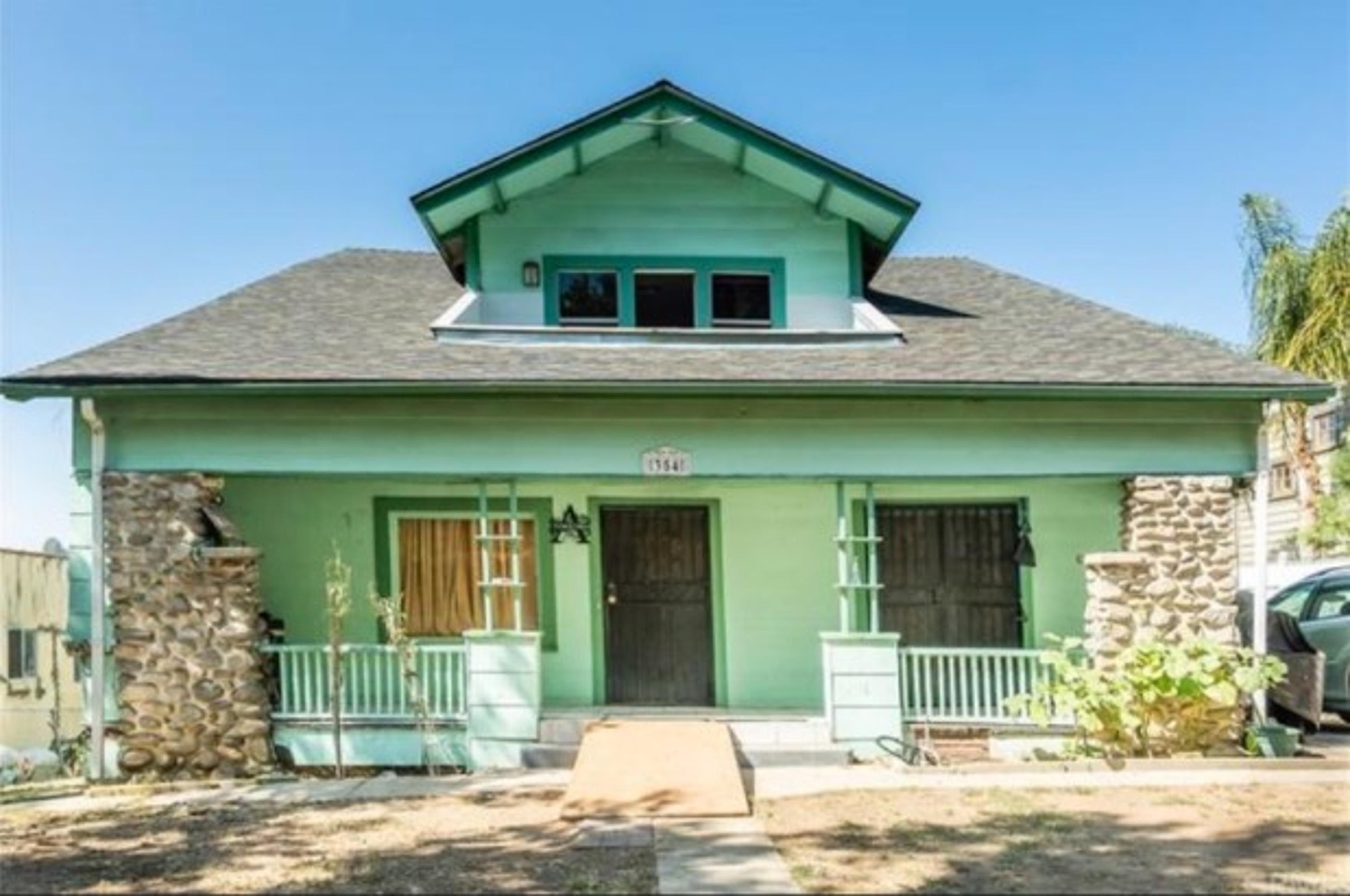No no, it’s still standing, I’m going to snark about this house in a different way today
You know, not everything is about the demolition of our built environment in toto. (Like, say, the razing of an entire Whittlesey.) Sometimes it’s more subtle.
Over in Highland Park, there’s a house. I confess I’m a _little_ confounded about its background. See, we have it in the permits that Fred C. Coryell (the contractor-builder who designed and built his own house at 225 N Avenue 53, which stood until replaced by an unusually ugly and depressing building in 1991) built 354 for Asenath Arick “Jane” Copes Phelps, widow of Harlow Jefferson Phelps, in 1909-10. Here’s the Highland Park Ebell meeting in the Phelps’s brand-new house in October 1910:
Mabel Phelps was 32 in 1910. West Avenue 53 was renamed North Avenue 53 about 1927
Here’s Mabel hosting folk at the home again in the spring of 1911
And the Phelps clan are listed in the directories from 1910 on. However, this rather odd bit of whatnot pops up in July 1911:
“Their beautiful home” replaced by this
Which makes no sense, since as far as we know it’s the Phelps’ home. Howard’s obit a year later notes he’s still at 5635 Monte Vista, mind you:
Aaaaanyway, just wanted to give you some early history on the old girl, and point out that her interior remained pretty intact, until hit by the Lowest Common Denominator. It’s the kind of thing you hear a lot about happening in San Francisco. Hey, Los Angeles, I thought we were supposed to be better than up there.
Note the brick fireplace, left, the built-ins, center, and the glass-paned door with glass doorknob leading to the kitchen
Which is now this, all sterile and "midmod" and “openplan.” Note the original white oak floors were ripped out and replaced with something else, or that may just be the subfloor, which they stained and figured, good enough.
Yep, better spray those windowsills and baseboard white, except the part you paint black, how delightfully, um, Craftsman
Carlos Ascencio, a realtor-flipper who works for ReMax, bought the place in February 2021 and got a permit to remodel the kitchens/bathrooms, but then, knowing the City would never check, ripped out interior walls and sprayed the whole thing.
When the permit said “no structural changes” I’m sure blowing out a load-bearing wall falls under that, um, sorta. Good luck in the next earthquake, 354!
They didn’t paint over the river rock, I’ll give ’em that much
Ascencio/ReMax bought it in February 2021 for $850,000. Blew out the dining room to make a “great room” and sprayed the whole place white. Sold it December for $1,500,000. Made $650,000 with $3000 in new kitchen appliances and a whole lot of cheap white paint. Not a bad racket.
The whole rip-it-out spray-it-white reminds me of cultural terrorist Jorge Cuevo, who raped the Pig’N Whistle on Hollywood Blvd. According to this, he intends to do it to 200 restaurants to start.
According to https://www.lataco.com/mr-tempo-mocks-pig-n-whistle it seems Mr. Cueva finds it appropriate to return the generosity and good fortune found in his adopted country—Los Angeles specifically—with destroying our unique cultural history. This he does without permits, because why would rules apply to him—he has a red hat!
About Nathan Marsak
NATHAN MARSAK says: “I came to praise Los Angeles, not to bury her. And yet developers, City Hall and social reformers work in concert to effect wholesale demolition, removing the human scale of my town, tossing its charm into a landfill. The least I can do is memorialize in real time those places worth noting, as they slide inexorably into memory. In college I studied under Banham. I learned to love Los Angeles via Reyner’s teachings (and came to abjure Mike Davis and his lurid, fanciful, laughably-researched assertions). In grad school I focused on visionary urbanism and technological utopianism—so while some may find the premise of preserving communities so much ill-considered reactionary twaddle, at least I have a background in the other side. Anyway, I moved to Los Angeles, and began to document. I drove about shooting neon signs. I put endless miles across the Plains of Id on the old Packard as part of the 1947project; when Kim Cooper blogged about some bad lunch meat in Compton, I drove down to there to check on the scene of the crime (never via freeway—you can’t really learn Los Angeles unless you study her from the surface streets). But in short order one landmark after another disappeared. Few demolitions are as contentious or high profile as the Ambassador or Parker Center; rather, it is all the little houses and commercial buildings the social engineers are desperate to destroy in the name of the Greater Good. The fabric of our city is woven together by communities and neighborhoods who no longer have a say in their zoning or planning so it’s important to shine a light on these vanishing treasures, now, before the remarkable character of our city is wiped away like a stain from a countertop. (But Nathan, you say, it’s just this one house—no, it isn’t. Principiis obsta, finem respice.) And who knows, one might even be saved. Excelsior!””
Nathan’s blogs are: Bunker Hill Los Angeles, RIP Los Angeles & On Bunker Hill.
